
We kindly inform you that, as long as the subject affiliation of our 300.000+ articles is in progress, you might get unsufficient or no results on your third level or second level search. In this case, please broaden your search criteria.

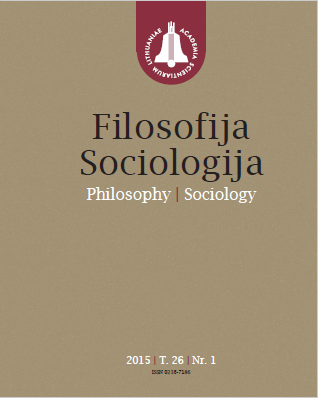
This article examines the premise that with the prevailing ubiquitous computing and constant connectivity the line between life online and life off-line and the boundary between physical and digital identity are becoming blurred. This means that the conception of identity in the digital culture transforms into the new transmediated identity which is in the continuous process of formation between the digital and the physical – the virtual and the real. Thus the transmediated identity unfolds in multiple media forms and manifests itself as integrated, dispersed, episodic, and interactive.
More...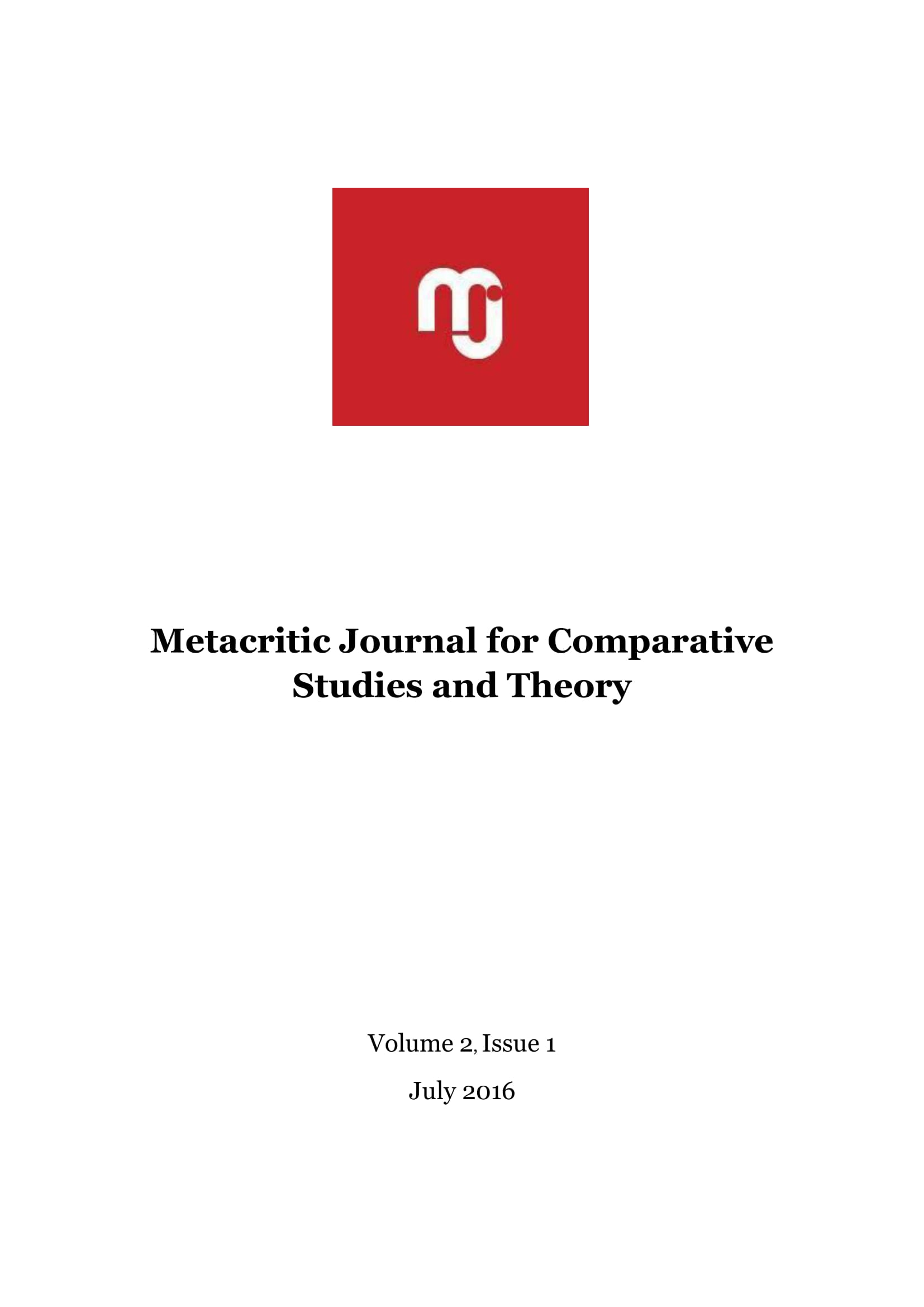
Translation Studies has crossed a tumultuous interval of theorization. But has it passed the linguistic limits instituted by a semiotician like Umberto Eco?Wouldn’t be the time to access more courageously the intersemiotic interregnum with its heterogeneous transfer of signs? As it happens in advertising, concrete poetry,tattoos, and stage or filmed version of famous texts? If we have gradually accepted that in the postcolonial and cross-cultural epoch what matters is not consensus, but negotiation and understanding, if we assimilated the postmodern lesson about Grand Narratives (J–F. Lyotard) and the subjectivity of recorded history, then we have to question ourselves about the role of translation and translators in a post-industrial society which blends globalized edutainment and corporatist efficiency, prejudice,reverse colonialism and anti-establishment movements. What type of equivalence are we supposed to choose in order to persuade today? The ekphrastic approach of translations may be better tuned to out gadgetized and image-informed epoch.
More...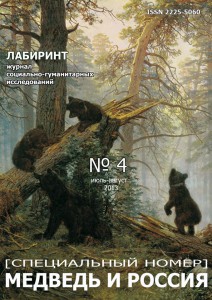
The article deals with the image of Russia as the bear in Western-European discourse of the First World War. The authors point out that due to polysemanticism of the bear symbol the propagandists of both allies and adversaries of Russia exploited the image very actively.
More...
The article investigates the phenomenon of ‘an internal form’ at the crossing of the intelligentsia studies and noospheric discourses. Proved is the thought that the intelligentsia as the storage of the reasonable purposes and values, feasible for concrete society, appears as an internal form of its history. Drawn is the conclusion about an intrinsic role of an information and semiotics components in the context of spiritual and moral imperatives of educational and spiritual production of the world intelligentsia.
More...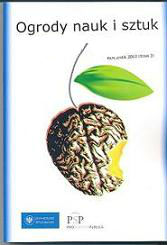
Understanding of guilt in Ancient Greece was deeply ingrained in symbolic language; particularly any behaviour that could be tied to offence was connected with the religious „stain” (grc. miasma) and the common fear of having contact with someone who is „unclean”. Also, the ritual of stoning, which was the main form of capital punishment, was one of the methods of purification. However, most publications on the issue of Greek stain exclude the question of stoning. The aim of the publication is to complete this omission and to show the religious connotation of the act of throwing stones in Ancient Greece.
More...
The article makes a short overview of the structuralist - semiotic approach to theatre studies and concentrates on post-structuralism. The latter treats the language as writing (cf. body language), which forms its own space of creation or 'inscription' (J. Derrida) and at the same time creates its context as well as the objects and meanings in the context. In addition to the visual level, the contemporary theatre is as well concerned with the act of construction or inscription in the space, therefore such an act may be called the act of construction/deconstruction. It is performed both by the author (the artistic director or the actor) and by the perceiver (the spectator). It is exactly the gesture of deconstruction that suggests a different way of 'writing', creation, or presentation of phenomena and objects. According to Hans-Thies Lehmann, contemporary theatre is a post-dramatic theatre. In its most characteristic features it represents postmodernist culture and exists in as well as creates a postmodernist discourse. Having been only imitated by the theatre (text perceived as a linguistic object is a certain analogue of the reality), the reality, the object, and the subject presented by this discourse now belong to the reality of the inscription in the stage space; they are now the products of this reality and manifest their meanings only within its context. On the other hand, this reality is found in the inter-textual space which, though denying the law of similarity, preserves the possibility of reference. In contemporary theatre, the action itself and the act of creation, construction or deconstruction become the referent. In other words, contemporary theatre, which functions and structures itself according to the laws of postmodernist discourse, is based on the coordination/synchronization of the rules of composition and decomposition, reference and referential distance, and auto- and hetero-reference.
More...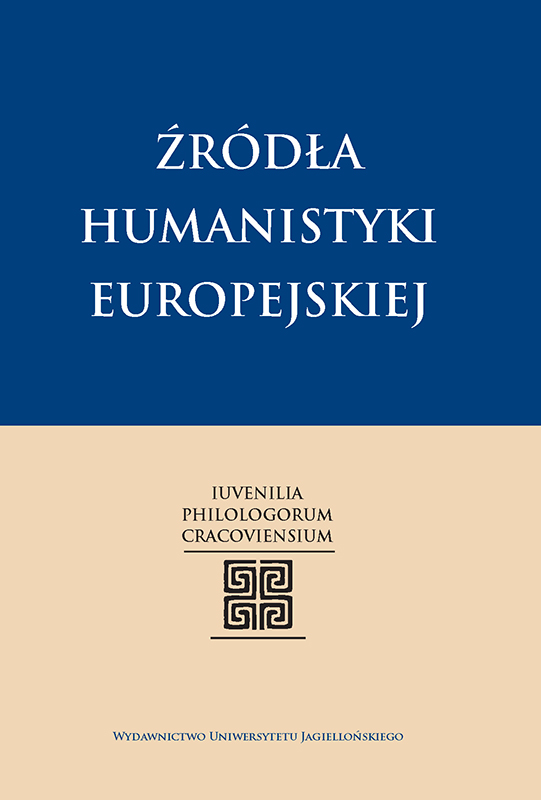
The purpose of the article is to present how the image simulacrum functions in DRN of a Roman poet – Lucretius. By describing one of three basic elements – which constitute the etymology of the word simulacrum – the similes aspect, it has become possible to connect the idea of the image with the conceptual metaphor theory. Drawing on the cognitive research into the way human perception influences categories and processes of thinking and understanding the world (including the value of the language itself), I have shown that in fact Lucretius’ simulacrum may serve as a cognitive tool or as a kind of a creative adjustment to the sensual material (the atoms and the void), which the Roman author persistently tries to make. Thus he is able to reveal the horrifying infinitude of the reality as well as to give the poetic ratio to his work – DRN.
More...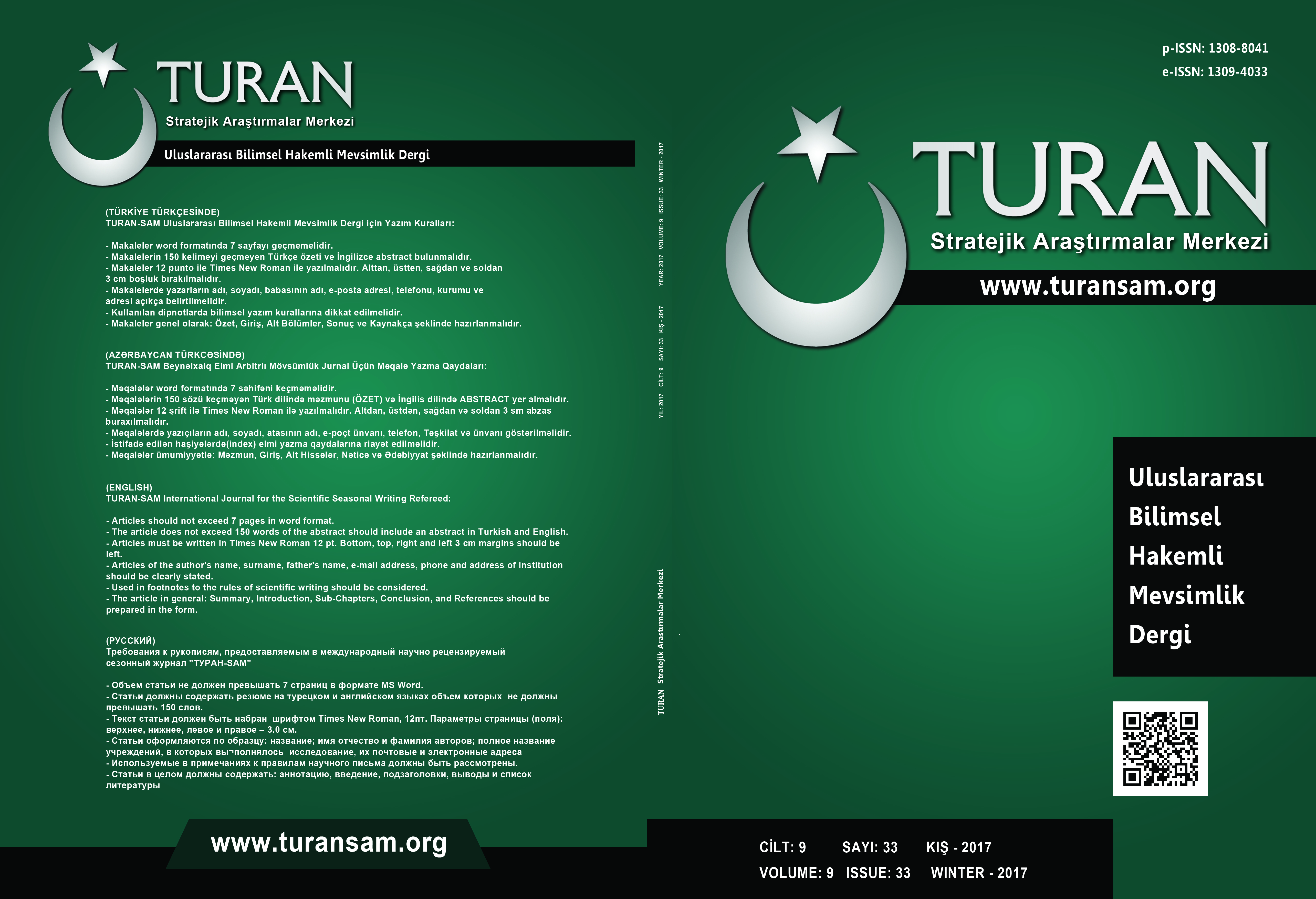
People are trying live properly to values, traditions and customs of their community. Politics, with this property, want to get through to individual interest, perception and knowledge by the way of political communication. Symbols are form from many audio/visual elements and they are the most important political devices of political communication and interaction. A person can explain the political view by the way of symbols. In this study, like wolf, horse and eagle ın Turk Culture we trying determine conception of animals symbols within the frame of cultural, historical and mythological elements. Hereby in this study, the relationship between culture and symbols are clarified to be intrinsic to Turkish Culture.
More...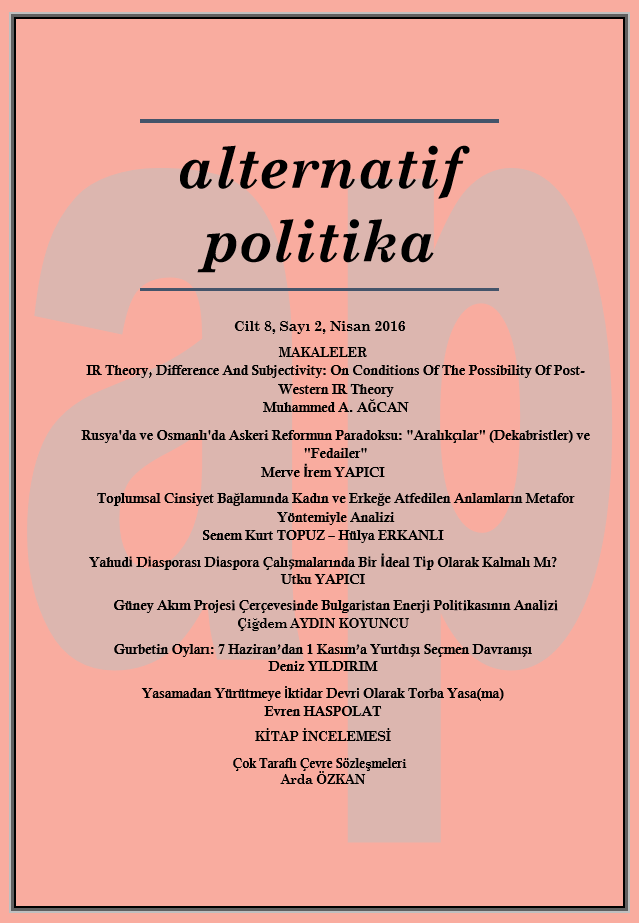
In this study that aims to reveal what concepts of woman and man mean through metaphors; in other words, how they are perceived rather than defining these concepts within the context of gender, primary data was obtained from survey method. Data obtained from surveys from 100 participants, metaphoric responses given for man and woman statements were basically evaluated and interpreted individually. Starting from this point, metaphors participants used for the concepts of woman and man and explanations why they used these metaphors were examined. Accordingly, the concept of woman and thus “woman” was defined by participants as fragile, in need of attention and care, passive and dependent, complicated and hard to understand, selfless, someone expected to give happiness, hardworking and responsible, and someone responsible for continuity of life. The concept of man and therefore “man” was defined by participants as active-ruler-director, protective-possessive, contentious, someone taking the responsibility of his family, acts rationally-concealing his feelings, someone who can use physical, unpredictable-independent, glorified, in need of attention, and selfish.
More...
‘Conspiracy theory’ is especially popular term used by journalists in Poland. Alas, this name is understood in an intuitive and journalistic manner only, and has an eristic use. Janusz Guzowski in his paper tries to establish its definitional sense. Unfortunately, his proposal is useless, because conspiracy mentality is defined by common and fundamental features typical for everyday and even scientific thinking. Such an approach has some undesirable consequence: a theory is called conspiracy because in somebody’s opinion it is conspiracy. That is why, Guzowski’s approach is here called intuitive-content, because such a naming is arbitrary and intuitive and depends on the content of the theory. In our paper there is proposed an opposite context-free approach, which is closely relative to Chomksy’s opinion. Thus a theory is recognizes as conspiracy, if and only if, it is ignored by scientists.
More...
The essay brings a discussion and interpretation of the philosophical views concerning some essential terms introduced in Heideggerian philosophical discourse, such as word (das Wort) and thing (das Ding), and its mutual relations. In the initial part of the article the author tries to investigate the connection between common thing and the artwork, as well as correlation between word in language and word in literary descriptions of the works o art (ekphrasis), then the article brings analysis of the Czesław Miłosz’s ekphrasis through the philosophical categories discussed in the opening parts of the essay.
More...
The paper poses the question about the corporeality of a liberary work. In the first part, the discussion is focused on the issue of a body, based on the phenomenological philosophy of Edmund Husserl and Maurice Merleau-Ponty. The second part presents the concept of liberature or, as it is often called, total literature. The last two sections are centred on the problem of the two types of a liberary “body,” as well as on the similarities between the phenomenological idea of the body and the corporeality of a liberary text.
More...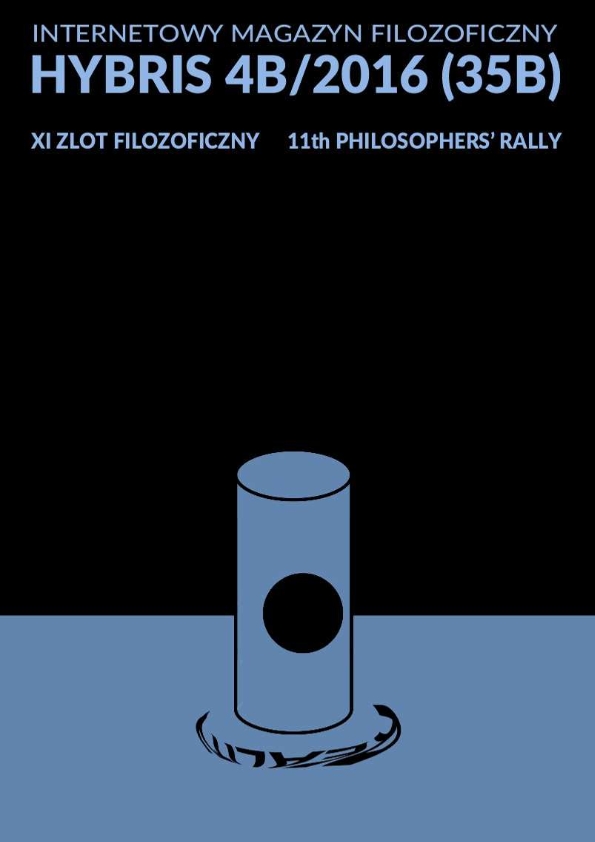
In the present study I analyzed some aspects of the program of logical empiricism. I devoted particular attention to issues such as demarcation criterion, protocol sentence or logical syntax. These issues have been considered mainly through the prism of the work of Rudolf Carnap, while the contribution of other representatives of the Vienna Circle was rather kind of argumentative background. Mentioned philosophical trend had to stand in the closest possible touch with science. Therefore, fundamentally discredited metaphysical issues as meaningless. According to the author, such a radical distinction between sense and nonsense is unauthorized. Key neo-positivist postulates themselves are based on certain metaphysical assumptions.
More...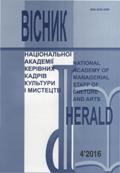
The purpose of the work. The research is related to the analysis of concepts such as ethos, which is a stable state of music and the «volition to live» by Arthur Schopenhauer, considered according to world harmony. Ethos is seen as a stable state of music, appearing on the transcendent dimension of cultural creativity according to historical and paradigmatic changes of the World. The methodologу of the reseаrсh іs the use of сompаrаtіve аnd hіstorісаl-logісаl methods, contextual and systematic methods. The above methodological approach allows to reveal and to analyze artistic phenomenon like part of cultural process. Also we used in our research cultural method. This approach allows us to consider all parts and cultural layers in their relationship. Scientific novelty consists in expanding notions of ethos music as a manifestation of the harmony of the cosmos. Analysis of ethos music concept allows to distinguish the spirit of music and consider it in correlation with the «volition to live». Ethos of music is interpreted as the embodiment of the micro and macro cosmos. Conclusions. Spirit of Music, like «heart of ethos music» implicitly embodies the style, ethos and estezys of human «being-in-culture». This category is constantly playing the archetypical harmony from the depth of the World volition.
More...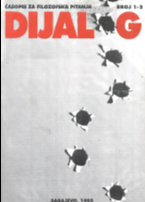
Doba rata je doba vladavine geopolitike. Tada se pmža, kako se čini, najpovoljnija prilika da se stekne svijest o onom političkom. Tako se odjednom sagledava nešto što je beskrajno, sveobuhvatno i neiscrpno, a što je u razdoblju življenja u miru imalo svoje vanjske i unutrašnje crte, prepoznatljive okvire jedne od mnogih čovjekovih djelatnosti.
More...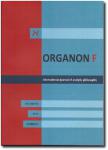
V tomto članku sa budem zaoberat’ predovšetkym knihou Barbory Geis- tovej Cakovskej Vztahy synonymie: logička semantika verzus lingvističke' teorie o synonymii. Na uvod uvedenu monografiu stručne predstavim a nasledne budem s niektorymi, da sa povedat’, t’aziskovymi riešeniami teorie polemi- zovat’.
More...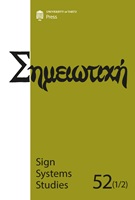
This article investigates the past-generating mechanism in Lotman’s semiotics by formulating a typology that distinguishes between two types of past-generating models – Marxian (as the repetitive compulsion of the past) and Benjaminian (as the redemption of the past) – and traces Lotman’s views and perspectives that resonate with these two models. Not only was Lotman acutely aware of the obsession with repetition in the history of Russia, he actively contemplated the possibility of breaking free from and renewing such repetition as well. While Lotman’s awareness of this was conceptualized as the inevitable persistence of a “dualistic structure” in the dynamics of Russian culture, his contemplation, on the other hand, was framed as an issue of transition from dualistic to ternary models. Defining the alternative approach of Lotman’s to the historical past as ‘the aesthetic approach’, this article examines his speculation on the specific cultural mechanism called ‘smuta’ as an exceptional example of Lotman’s interest in the “lost pathway” of the past. Through these explorations, the discussion illuminates Lotman as a thinker who, to use his own phrase, could see both “the allure and weakness of the Russian type of culture”.
More...
This article investigates the welfare of domestic cats by adopting a zoosemiotic perspective. It gives a broad picture of animal welfare in general and contextualizes studies conducted on cats within this, revealing differences in research foci compared to dogs. However, the main focus lies on the complexities of human– cat relationships and societal perceptions, which belong to the realm of ethological and anthropological zoosemiotics. Thus, we emphasize the importance of an integrated approach in comprehensive welfare assessments. Key factors such as increased human–cat interaction, societal constraints, and subjective experiences emerge as significant influences on cat welfare. Collaboration between veterinarians and behaviourists is encouraged, alongside with increased education of cat caregivers. Taking this line is supported by information gathered from interviews we conducted with Czech cat behaviourists. The article suggests a paradigm shift in research methodologies, proposing the use of zoosemiotic theories to comprehend alloanimal agency in general and cats’ agency in particular to enhance their well-being. The study’s goal is to identify the existing gaps and controversies in cat welfare literature (e.g. contradictions in devising best keeping conditions, insufficient education concerning cat welfare) by analysing relevant and recent studies in this field. Additionally, we aim to improve understanding of cat welfare as a complex phenomenon, and, with the help of zoosemiotics (umwelt theory and critical anthropomorphism), promote a comprehensive approach to the welfare of household cats in human-dominated environments.
More...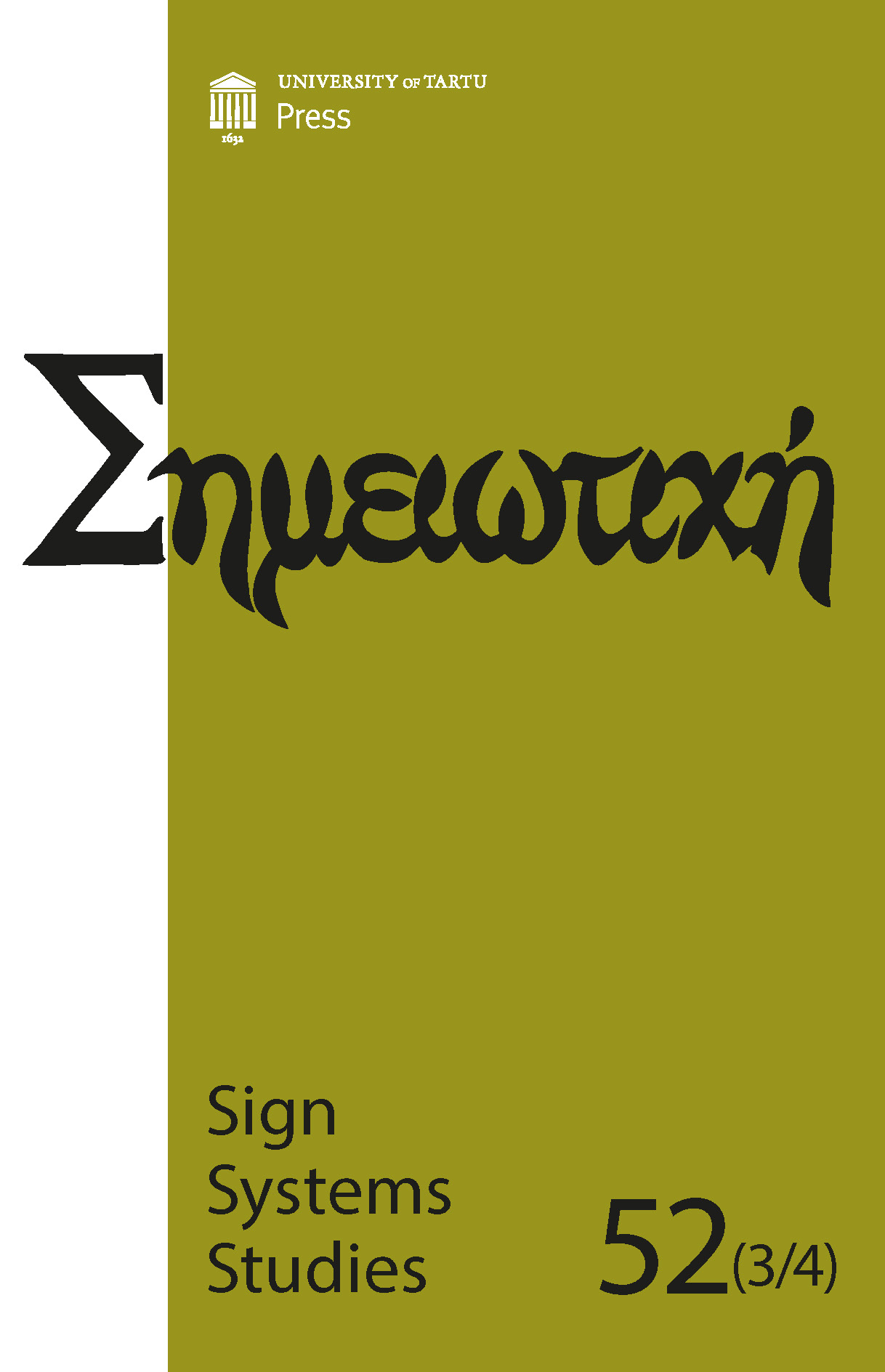
We present the results of a survey conducted among professional semioticians from around the world, who were asked to answer two questions: (A) what problems should semiotics solve in the near future? and (B) what are the most important publications on semiotics since 2000? The collection of 63 responses received provides a self-description of contemporary semiotics, as well as some material for scholars to learn from one another. In addition, we add responses from the latest versions of a large language simulator (GPT) as a characteristic feature of the current decade.
More...